
1960 – Carlo Ubbiali’s last World Championship season
In the course of his career, Carlo was nicknamed Chinese, probably because of his almond-shaped eyes. With 7 world championship titles, Ubbiali was already the most successful driver since the world championship was held. The 1960 season was to be his last and of course he wanted to say goodbye to racing. The rivalry between him and Tarquinio Provini had led to the fact that he had abseiled to competitor Morini. And the opponents had not diminished. With Gary Hocking from Rodesia (today’s Zimbabwe in South Africa), Tom Phillis and Mike Hailwood, new strong drivers joined the team last year. Well-known faces like Luigi Taveri and Ernst Degner with the increasingly competitive MZ were among the serious challengers.
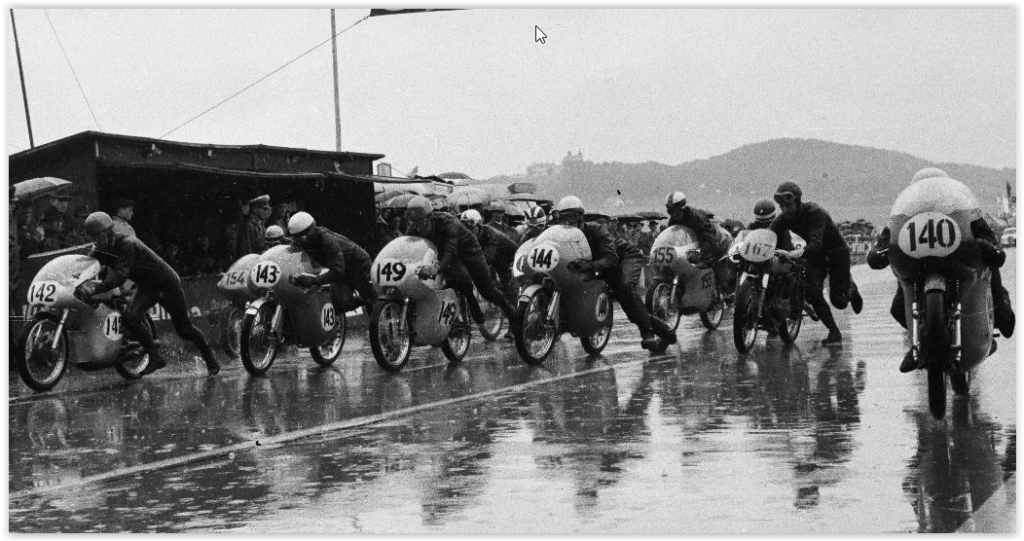
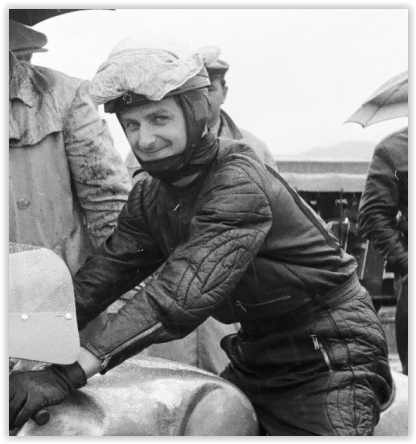
The factory teams of the 1960 motorcycle World Championship
After Provini’s departure from MV Agusta, Taveri and Hocking were new to the team, while nothing had changed in the larger two classes. Luigi Taveri had already been Carlos’ team-mate from 1955 to 1957. Gary Hocking made people sit up and take notice last year with two wins for MZ in Sweden and at the Ulster GP. After Ducati left, Bianchi, another Italian manufacturer, entered the motorcycle world championship at the factory. In addition, Honda with a real armada of factory drivers in the two smaller classes. It was clear to Carlo Ubbiali that the challenge to defend both world championship titles should not be a honey lick. But in his last season he wanted to show everyone again.

Carlo got off to a strong start in 1960
After the French GP was only reserved for the larger classes, as in the previous year, the Italian’s season started his first Grand Prix again on the Isle of Man. In April, Ubbiali had won the home races of Cesenatico and Imola in the 250cc class. The Tourist Trophy was held this year on the ultra-long (a good 60 km) Mountain Course.

In the 125cc race, Carlo was indomitable, drove the fastest lap and won ahead of his teammates Hocking and Taveri. A Japanese named Taniguchi came in sixth. Nobody could have guessed at that time how quickly they would improve and with what immense effort the company from the Far East would put its stamp on the Grand Prix Sport within a very short time. In the 250cc race, Ubbialis team colleague Hocking retaliated with a win at the Italian, who this time only remained in second place. But at least before his long-time arch rival Tarquinio Provini on the Morini. Behind them, three Honda riders reached the finish line, led by Australian Bob Brown.

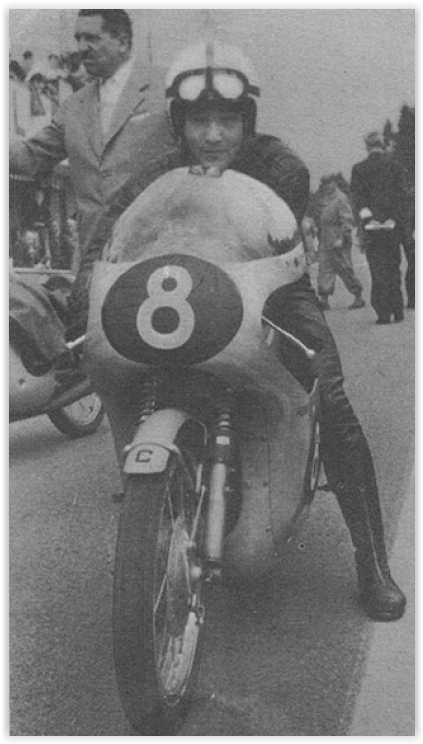
Grand Prix of the Netherlands in Assen
At the Dutch TT, Carlo fought back in the 250 cm³ class and won ahead of Hocking, Taveri and John Hempleman (MZ). With the victory in the 125s, the man from Bergamo achieved his eighth double victory in what is now his twelfth GP season. Second place went again to teammate Hocking and third was Alberto Gandossi on MZ.



Grand Prix of Belgium
In the 250s Carlo followed suit in Spa-Francorchamps and won again ahead of Hocking and Taveri. At the 125 cm³ GP of Belgium victory went to Ernst Degner on the strong two-stroke MZ, ahead of his teammate John Hempleman. Ubbiali achieved his sixth podium in the sixth Grand Prix of the season with third place. At that time with the error-prone technology an unbelievable constancy. Incidentally, his long-time arch rival and team-mate Provini ended up in the hospital at the Belgian GP, having crashed on the Blanchimont left turn.


Grand Prix of Germany – under a bad star
The weekend at Solitude near Stuttgart with more than 250.000 spectators was overshadowed by the fatal training accident of the Australian Brown and questionable decisions by officials. As in the TT, Hocking won the 250 race in front of Ubbiali. But what the Italian had achieved in this race was a really incredible ride. He fell at the beginning of the 250cc GP, but was able to pull himself up again to cross the finish line in second place. With his third place, the Japanese Kenjiro Tanaka took the first podium for Honda and a driver from the Far East at the German GP. Had this not happened under such tragic circumstances, the Japanese celebration would have been much more exuberant than it was afterwards.

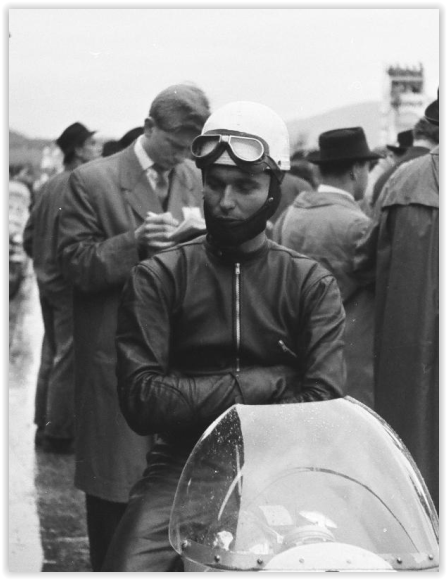
The scandalous conditions in post-war German racing
The smallest class had a break in Germany because it was not advertised at all. The reasons for this were unfortunately more than embarrassing and did not put those responsible in a good light. Fearing that an Eastern German driver in West Germany could win on a make from the GDR, a 125cc World Championship run was simply not carried out. As a result of this, there were exceptionally even fewer World Championship rounds with only 5 races in this category versus 6 in the 250cc class. In the years before that, there were mostly seven of them. The events reminded of the year 1957, when the GDR drivers were allowed to take part in the West German motorcycle championship, but in the end they were disqualified by the OMK (the highest motor sports authority in West Germany) with questionable reasons. For more information see the story about Ernst Degner in our history.
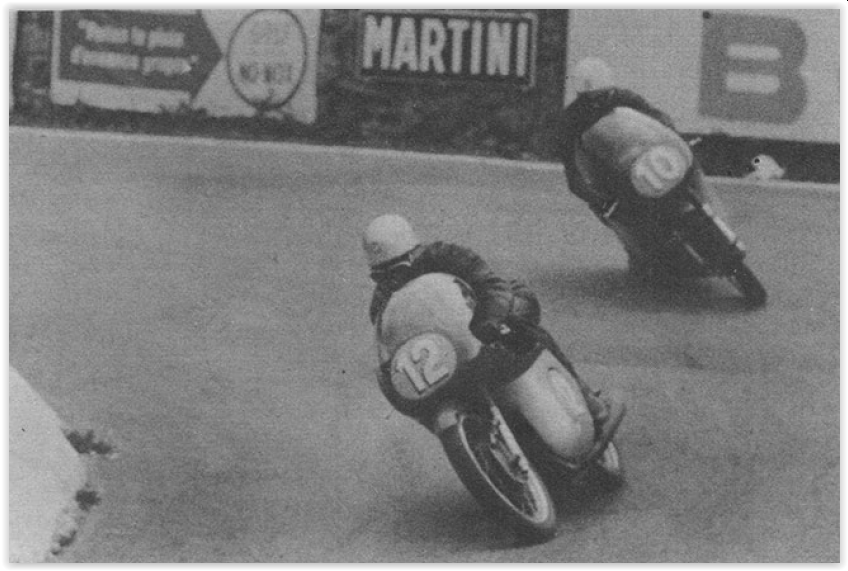
Ulster Grand Prix
Carlo made no mistake in the 250s and won the Ulster GP. On the Dundrod track near Belfast, Hocking had bad luck and had to give up with clutch problems. Only in the 125cc race the Rhodesian saw the checkered flag in Northern Ireland, but as runner-up only, because Ubbiali won here too. Third place and the second podium of the season went to Ernst Degner with his MZ after his victory in Spa.


Strong season finale of the fast Italian
In the final race in his home country, the man from Bergamo proved to be unbeatable again and crowned his 6th 125cc world title with a 4th win of the season. MV team-mate Bruno Spaggiari was second ahead of Degner. In the 250cc race for the Nations GP, Hocking’s compatriot Jim Redman showed how strong the Honda had become. While Gary Hocking had to give up again with mechanical problems, Ubbiali won ahead of Redman on his Honda. Ernst Degner rounded off his excellent season with a 3rd place. The 250cc World Championship was decided in favor of Ubbiali.

Incredibly strong record
With a total of 39 Grand Prix victories, including 26 in the 125cc class, 13 of them in the 250s and 9 world championship titles, Carlo Ubbiali is still one of the most successful drivers of all time. In the smaller classes, only the Spaniard Angel Nieto surpassed his impressive series with 13 titles. Today, for regulatory reasons, the successor category Moto3 is defined as a junior class and has an age limit. When you consider how dangerous racing was in Carlos’ time, his achievements border on a miracle. During his career, more than 150 racing drivers had given their lives to two-wheel racing. Some of them had crossed Ubbiali’s path. In the 1951 season he lost both teammates in a fatal accident. But he had not only survived, he had successfully overcome the fine line between death and triumph year after year and went down in history as one of the most successful GP drivers in the world.
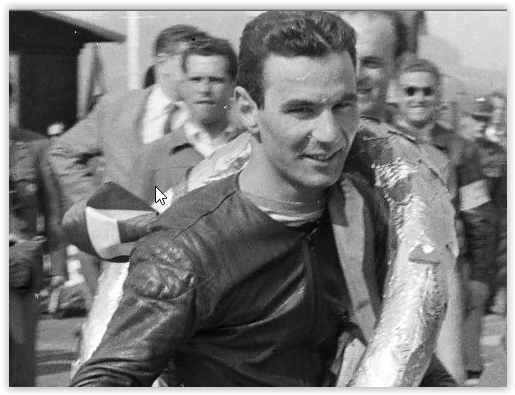
125cc Riders World Championship 1960
After only the first 6 drivers of a race were able to win championship points at that time, here are also the drivers who finished 7th to 10th in a GP (with the country codes customary at the time): Rex Avery (GB, EMC), † Bob Brown (AUS, Ducati), Gerard Carter (IRL, Honda), Franco Farné (I, Ducati), S. Fukuda (J, Honda), Moto Kitano (J, Honda), Hans Lenheer (NL, Ducati), Werner Musiol (DDR, MZ), Noel Orr (N.Irl., Honda), Alberto Pagani (I, MV Agusta), Tom Phillis (J, Honda), Yukio Satoh (J, Honda), Sadao Shimazaki (J, Honda), Jaap Stoltenkamp (NL, NSU), Teisuke Tanaka (J, Honda).
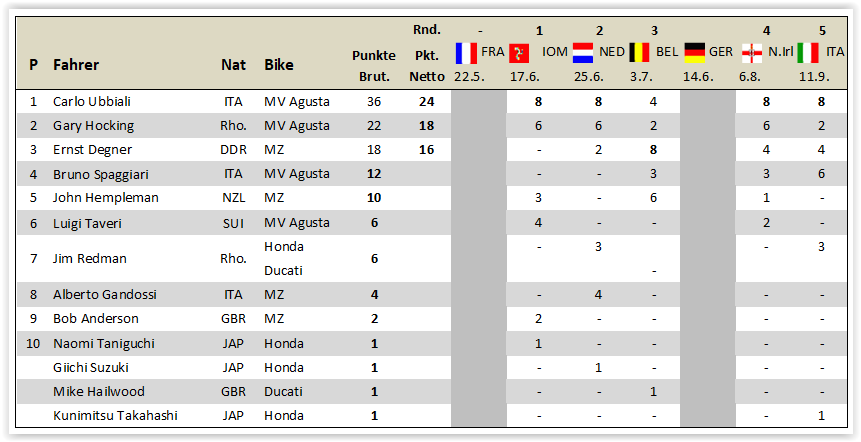
125 cm³ Manufacturers World Championship 1960

250cc Riders World Championship 1960
For completeness, here are the pilots who finished 7th to 10th in a GP: Heiner Butz (D, NSU), Phil Carter (GB, NSU), John Dixon (GB, Adler), Alan Dugdale (GB, NSU), Jan Huberts (NL, Honda), Horst Kassner (D, NSU), Siegfried Lohmann (D, Adler), Jack Murgatroyd (GB, NSU), Raphaël Orinel (F, NSU), Mike O’Rourke (GB, Ariel), Noel Orr (N.Irl., NSU), Osvaldo Perfetti (I, Bianchi), Frantisek St’astný (CS, CZ), Rudi Thalhammer (A, NSU), Pierrot Vervroegen (B, MotoBi).
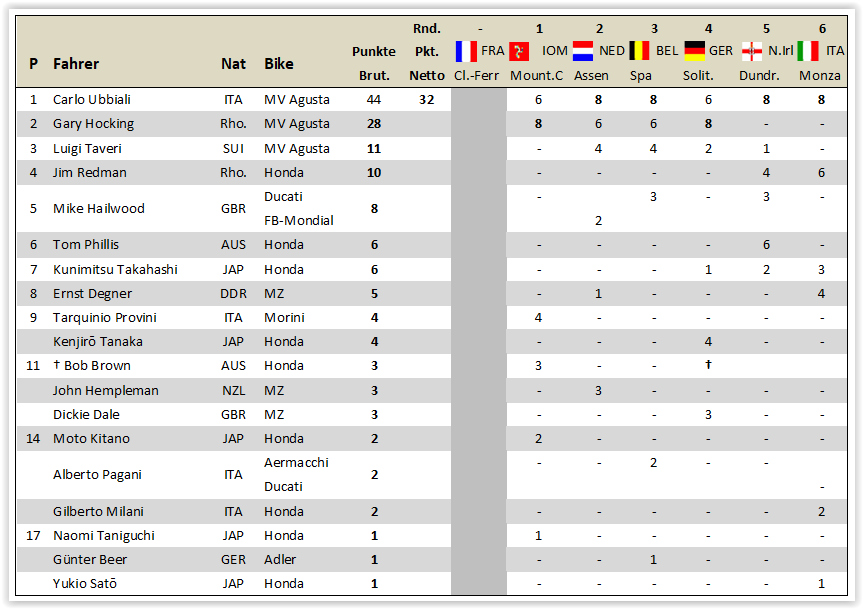
250 cm³ Manufacturers World Championship 1960
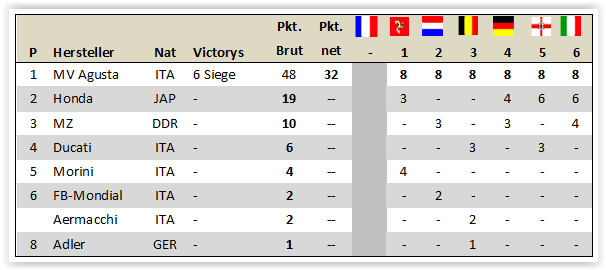
Carlo Ubbiali’s long life after his resignation
Before compatriots Giacomo Agostini and later Valentino Rossi appeared, Ubbiali was undisputedly the best and most successful GP rider from the country with the shape of a boot. He had hardly made any mistakes in the 12 years of his career. Except for the fall in training for the 1957 Assen GP, Carlo never seriously injured himself and was therefore forced to take a longer break. Together with Mike “the Bike” Hailwood and the idol of the masses Valentino Rossi, he is still in third place in the all-time list of the best after Agostini and Angel Nieto, with 9 World Championship titles each. His advice was sought after by many Italian riders for a long time. Carlo Ubbiali died at the old age of 90 in his hometown of Bergamo as a result of a domestic accident on June 2, 2020, as the last surviving driver of the first World Championship season in 1949.
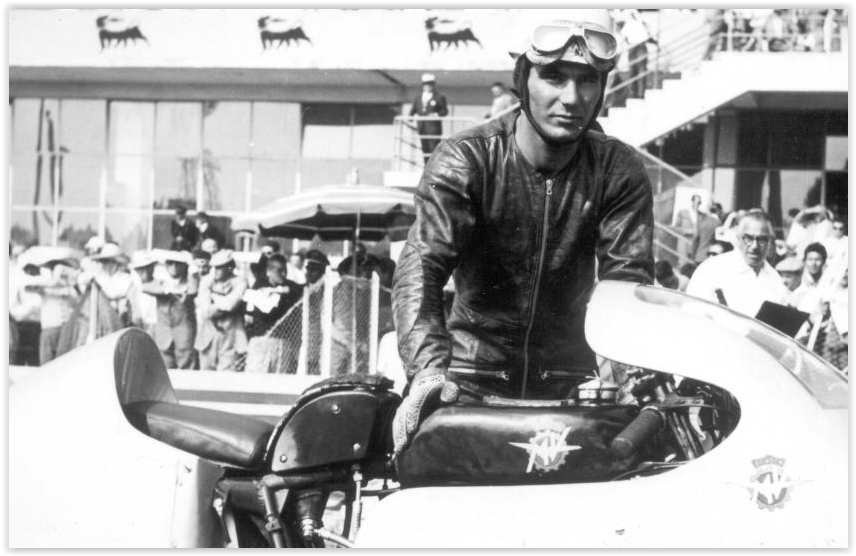
The main successes of Carlo Ubbiali
In total, the northern Italian had six 125cc world titles and three of them in the 250cc class. There were also six titles in the Italian 125 championship and two in the 250cc category. With a total of 39 victories, Ubbiali contributed more than a third of the 104 Italian Grand Prix victories in the first 12 years of the World Championship. That he supposedly had 71 GP starts, as is claimed on Wikipedia and other sources, is unfortunately not true, like so much in this supposed knowledge database. We researched every single Grand Prix of his career meticulously in our huge archive and counted them exactly, there were actually 88 starts at World Championship races. With his 39 victories, the Italian had a success rate of almost 50 percent.
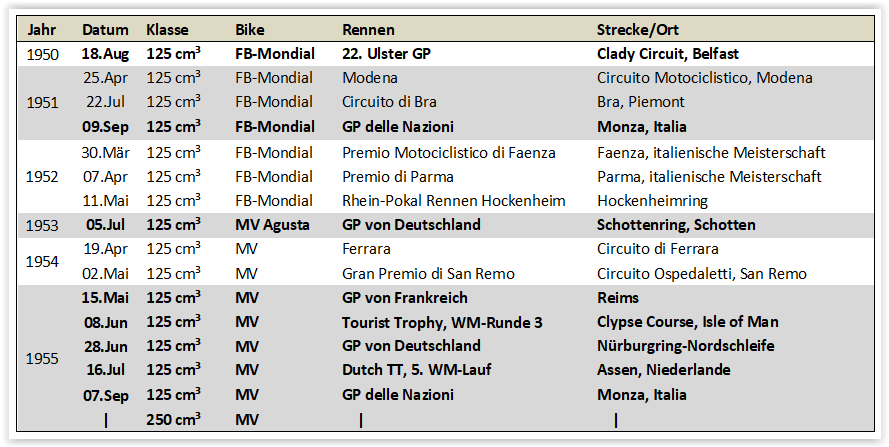
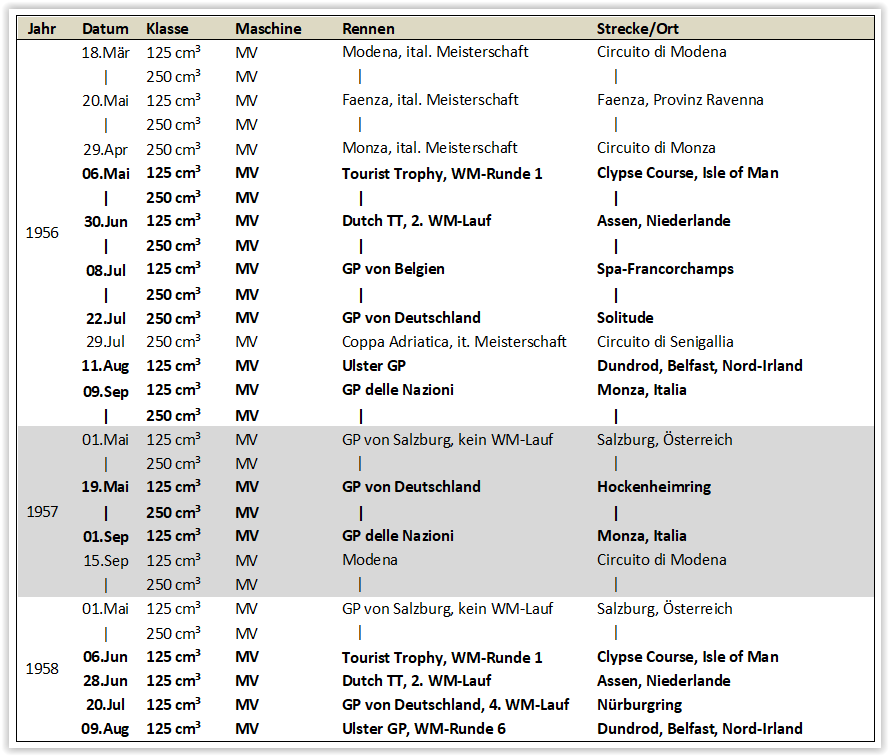
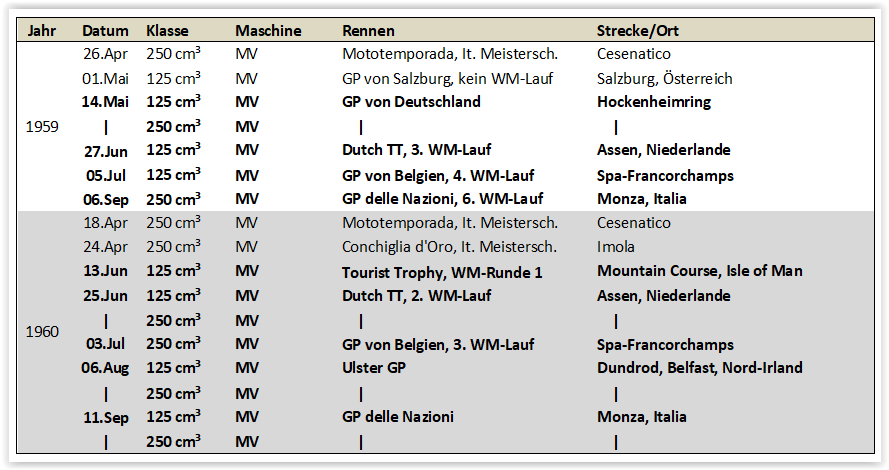
The relation to today
If you consider that in Ubbialis’ time only between 3 and 7 races were driven in the world championship per class, 39 GP victories are an even more than impressive, rather incredible number today. For comparison, a WorldSBK rider of 2019 drove a total of 37 World Championship races out of a planned 39 races. Since the controversial Superpole race has been part of the calendar, a rider had been almost driving as many races as Carlo had GP victories in his whole career. In MotoGP, without the corona pandemic 2020, the first 20 races would have been held in one season. With this number, a rider drives as many races in two seasons as Carlo won (we remember he won almost 50 percent of his races), who in five of his 12 World Championship years even competed in two classes at the same time.
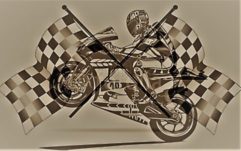
Carlo Ubbiali, nicknamed “Chinese,” was a legendary motorcycle racer with seven world championship titles, making him one of the most successful drivers in the history of the sport. His last season in 1960 was marked by strong competition from fellow riders, including Gary Hocking, Tom Phillis, and Mike Hailwood. Ubbiali’s determination to defend his world championship titles made it a challenging but memorable season.